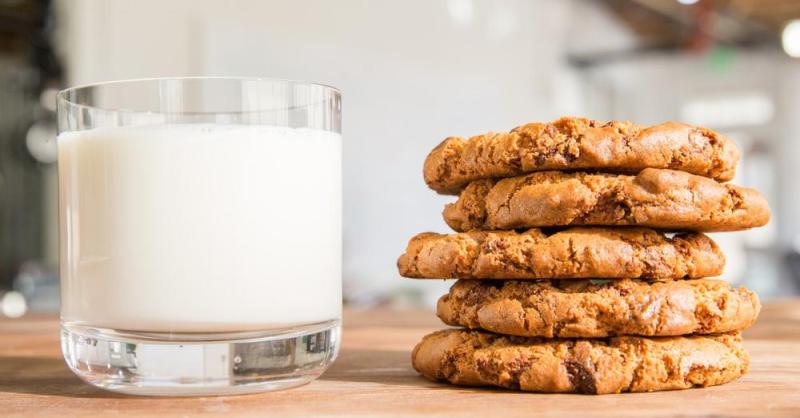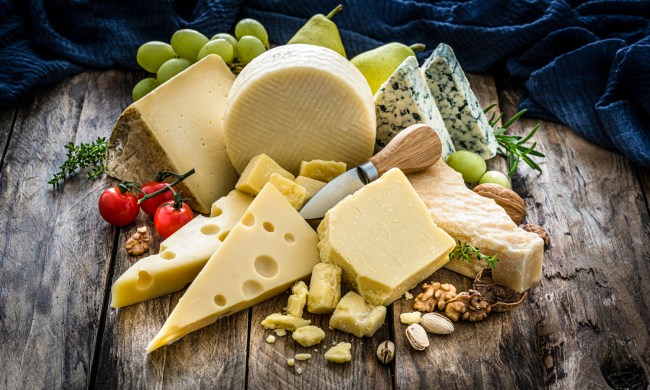Is there anything more classically and nostalgically delicious than a truly great chocolate chip cookie? We’d say absolutely not. There’s something in a chocolate chip cookie that invokes in us kinder, more understanding, gentler, more joyous versions of ourselves, and we call that a win.
The problem with chocolate chip cookies is that often, they’ll come out too cakey, raw, or underbaked, or just too crumbly. Thankfully, ChefSteps lets us in on a few chocolate chip cookie secrets in its YouTube video:
It turns out, pressing your baked cookies is the magic factor in a perfectly moist, chewy, and tantalizingly chocolate chip cookie. We tried it ourselves and were completely blown away! Who knew?

Chocolate chip cookies recipe
You’ll notice the cookie recipe below (from ChefSteps) is in ounces, rather than tablespoons and cups as most recipes are designed in America when it comes to how to make cookies. By weighing your ingredients, you’ll find you get a much more consistent bake each time, as well as one that tends to match the original recipe most closely. A small kitchen scale is a great investment and will lead to perfectly balanced recipes every time.
Ingredients:
- 7.8 ounces of butter
- 7.1 ounces of brown sugar
- 6.3 ounces of granulated sugar
- 0.53 ounces of kosher salt
- 0.18 ounces of baking soda
- 0.71 ounces of vanilla extract
- 3.5 ounces of eggs (about 2 whole eggs)
- 14.1 ounces of pastry flour
- 10.6 ounces of 40% cocoa milk chocolate, chopped
Method:
- Cream together butter, sugars, salt, and baking soda in the bowl of a stand mixer. Mix until light and fluffy, pausing to scrape the sides of the bowl.
- With the mixer running, slowly add in eggs and vanilla.
- Add flour and chocolate until just combined.
- Optional step: Chill dough in the refrigerator for at least 15 minutes.
- While the dough is chilling, preheat the oven to 350 degrees Fahrenheit.
- Portion dough into ball shapes and place onto a parchment-lined sheet tray.
- Bake 13 to 14 minutes, then transfer to a cooling rack for at least 10 minutes.
- Optional step: Using the bottom of a small jar or glass, press down on the cookies as soon as you pull them out of the oven.
Baking cookies: Chocolate chip cookie tips and tricks
- Chilling cookie dough before it’s baked is important for a few reasons. First, it re-solidifies the butter in your dough, which will keep it from melting too quickly in the baking process. The longer butter has to break down, the more uniform and perfectly shaped your cookies will be. Another reason to chill your dough is that it actually makes your cookies more flavorful. With the extra time for the dry ingredients to absorb the wet ingredients, the flavors will be more concentrated and delicious.
- The optional pressing step in this recipe breaks the surface of your cookies so they have more of a crackle texture on top. The pressure also compresses the inside, making a chewier cookie that stays fresh even longer.
- If you have a convection oven, use two pieces of parchment paper with a bit of cookie dough smudged between each piece in all four corners. This keeps the fan in your oven from blowing the cookies all over the place.



